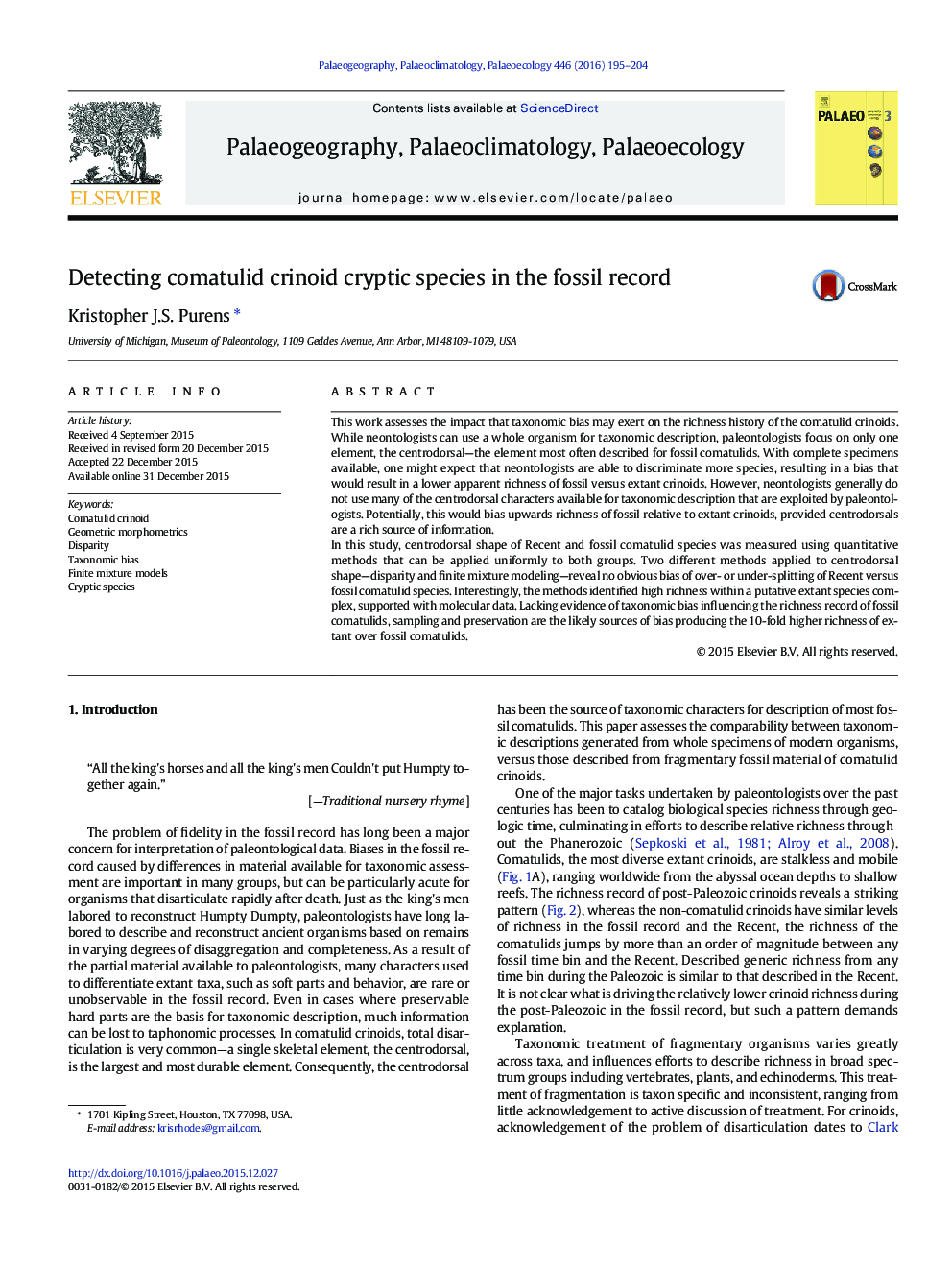| Article ID | Journal | Published Year | Pages | File Type |
|---|---|---|---|---|
| 6349430 | Palaeogeography, Palaeoclimatology, Palaeoecology | 2016 | 10 Pages |
Abstract
In this study, centrodorsal shape of Recent and fossil comatulid species was measured using quantitative methods that can be applied uniformly to both groups. Two different methods applied to centrodorsal shape-disparity and finite mixture modeling-reveal no obvious bias of over- or under-splitting of Recent versus fossil comatulid species. Interestingly, the methods identified high richness within a putative extant species complex, supported with molecular data. Lacking evidence of taxonomic bias influencing the richness record of fossil comatulids, sampling and preservation are the likely sources of bias producing the 10-fold higher richness of extant over fossil comatulids.
Related Topics
Physical Sciences and Engineering
Earth and Planetary Sciences
Earth-Surface Processes
Authors
Kristopher J.S. Purens,
